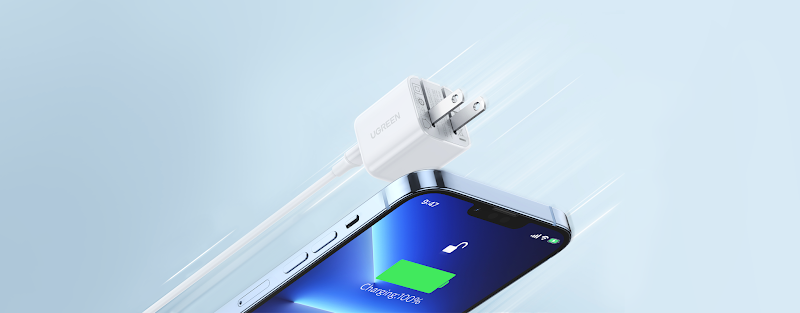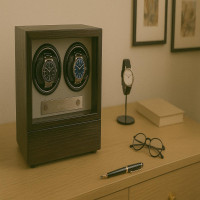How to Tell If a USB-C Charger Supports Real Fast Charging? 4 Key Specs to Check

Strong 8k brings an ultra-HD IPTV experience to your living room and your pocket.
In today’s connected world, fast charging is no longer a luxury—it’s an expectation. From powering smartphones between meetings to recharging laptops on the go, the USB-C charger has become an essential part of everyday life. But while nearly every charger now claims to support “fast charging,” not all deliver on that promise. The term is often used loosely, leaving users frustrated by slow speeds, overheating, or incompatibility with their devices.
So how do you know if a USB-C charger truly supports real fast charging? The answer lies in understanding four key technical specs—and a few practical testing methods. This guide will help you make informed decisions and avoid common pitfalls.
1. Check the Output Power: It’s Not Just About Bigger Numbers
The foundation of fast charging is simple physics: Power (W) = Voltage (V) × Current (A). A charger that outputs 9V at 2A provides 18W. Depending on your device, this might be fast—or entirely inadequate.
Here’s a quick breakdown of what different devices typically require:
Smartphones: Usually support 18W–30W. Some high-end Android phones can draw up to 45W.
Tablets: Require 30W–45W for efficient charging during active use.
Lightweight laptops: Often need 45W–65W.
High-performance laptops: Demand 100W or more.
A true fast-charging USB-C charger should explicitly list these power output levels across several voltage profiles (e.g., 5V/3A, 9V/2A, 20V/5A). Crucially, you should also distinguish between total power output and single-port capacity. Many multi-port chargers advertise 100W, but only one port delivers full power. Understanding this difference is critical, especially if you plan to charge multiple devices at once.
2. Confirm Protocol Support: Fast Charging Requires Language Compatibility
Just like people, devices and chargers need to “speak the same language” to cooperate efficiently. That language comes in the form of charging protocols, and not all USB-C chargers support the same ones.
Common fast charging protocols:
USB Power Delivery (PD): The most widely adopted standard. Devices like iPhones, iPads, and most USB-C laptops rely on PD.
PPS (Programmable Power Supply): An advanced extension of PD 3.0/3.1, offering fine-tuned voltage/current control. Required by some Samsung smartphones and newer laptops.
Quick Charge (QC 3.0/4+): Primarily found in Android devices with Qualcomm chipsets.
If your charger doesn’t support the protocol your device needs, charging will default to a much slower rate—even if the wattage is technically high enough. For example, a charger without PPS might not enable super-fast charging on supported Samsung phones, even if it offers 45W output.
Before purchasing, verify the charger’s protocol support (usually listed in the specs or printed near the ports). Cross-check this with the specifications of your primary devices.
3. Use the Right Cable: The E-Marker Chip Makes or Breaks High-Power Charging
A commonly overlooked component in fast charging is the USB-C cable. For chargers rated above 60W (typically 20V/3A), the cable must include an E-Marker chip—a small embedded controller that allows high-wattage power delivery and communication between the device and charger.
Without an E-Marker chip, even the best USB-C charger will be throttled. For example, trying to charge a 100W-capable laptop using a basic cable will likely cap the output at 60W or less. The result? Slower charging times, device warnings, or charging that stops under load.
To ensure optimal performance:
Use certified USB-C cables that explicitly state their wattage support (e.g., “Supports up to 100W”).
For charging above 60W, ensure the cable is E-Marker compliant.
Don’t assume all cables are equal—even if they look identical.
4. Understand Power Distribution and Thermal Management for Multi-Port Use
Many users choose USB-C chargers with multiple ports to streamline their workspace or travel kit. But here's a critical insight: when you plug in several devices at once, the charger splits its total output among them.
A 100W charger might deliver:
100W to one laptop when used alone
65W to a laptop + 30W to a phone when both are plugged in
Or even drop power further if three or four ports are in use
True fast-charging performance depends on whether the charger:
Offers smart power allocation, adjusting dynamically based on each device’s needs.
Maintains per-port output even under full load.
Controls temperature and voltage fluctuations to avoid thermal throttling or device damage.
When choosing a charger, look for detailed output distribution charts or documentation. Ideally, each port should be able to fast charge independently without dramatically impacting the others.
Real-World Tip: How to Verify If Fast Charging Is Actually Happening
Specs on paper are one thing—but how can you tell if fast charging is occurring in real time?
✅ Method 1: Device Notification
Modern smartphones typically display charging status. Look for messages like “Fast charging,” “Quick charging,” or “Super fast charging.” iPhones may show a lightning bolt icon, while Android phones often display the charging speed on-screen.
✅ Method 2: Use a USB power meter
A small inline meter can display real-time voltage and current. If your phone is drawing 9V/2A, you know it’s pulling 18W. For laptops, look for 20V output and current above 2A for fast charging.
✅ Method 3: Charging time
If your phone or laptop gains 50% or more battery in under 30 minutes, you’re likely using a fast-charging setup. Anything slower than that—despite using a so-called fast charger—may point to compatibility issues.
Extra Advice: Common Red Flags for Fake Fast Charging
Some USB-C chargers claim fast-charging support but fail in practice. Here’s what to watch out for:
Vague or missing specs (no mention of specific voltages or protocols)
Overuse of marketing buzzwords like “SuperCharge” without technical backing
No mention of PD, PPS, or E-Marker cable requirements
Performance drops significantly when using multiple ports
Device feels unusually hot during charging
If possible, consult third-party reviews or teardown analyses to confirm build quality and chipset details.
Conclusion: Real Fast Charging Is a System, Not Just a Label
The term "fast charging" is often thrown around, but achieving it requires more than just plugging into a high-wattage brick. True fast charging depends on synergy between your USB-C charger, the device, the protocol, and the cable.
When selecting your next charger, don’t be swayed by bold packaging or exaggerated claims. Instead, focus on the four key factors: output power, supported protocols, cable compatibility (including E-Marker support), and intelligent power distribution. Armed with this knowledge, you'll avoid frustration and ensure that every device charges as quickly—and safely—as it should.
Note: IndiBlogHub features both user-submitted and editorial content. We do not verify third-party contributions. Read our Disclaimer and Privacy Policyfor details.



